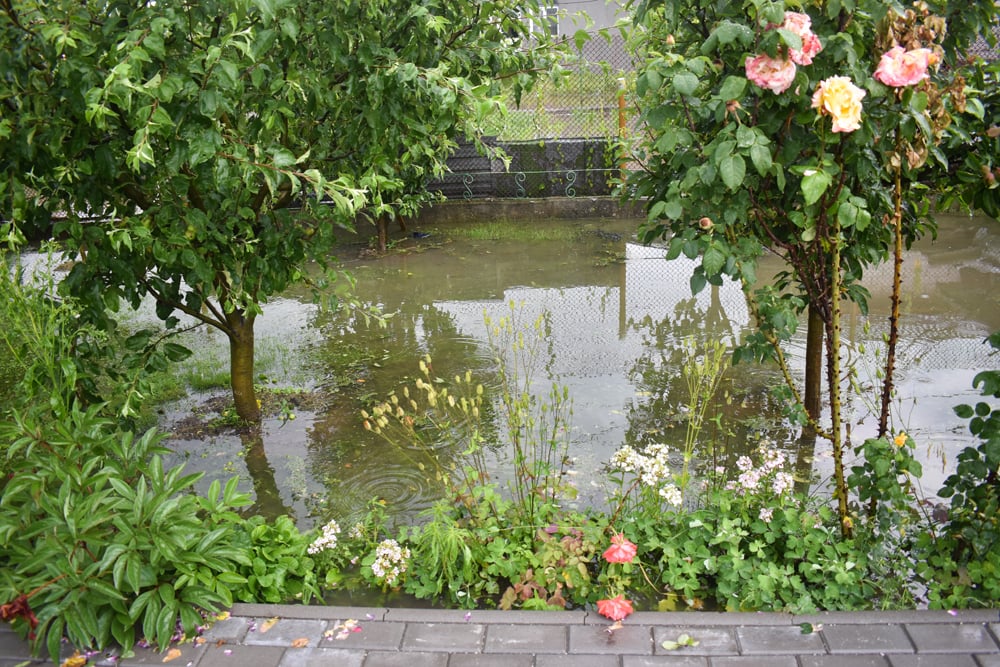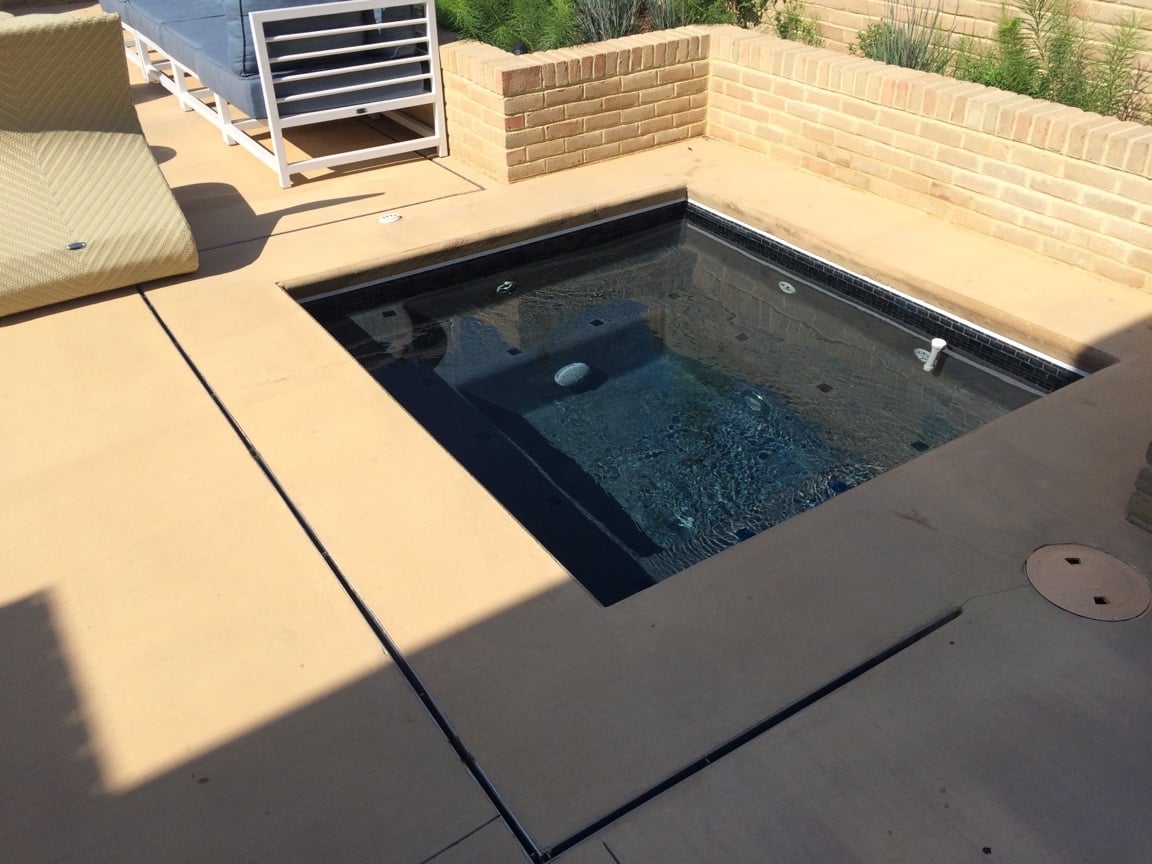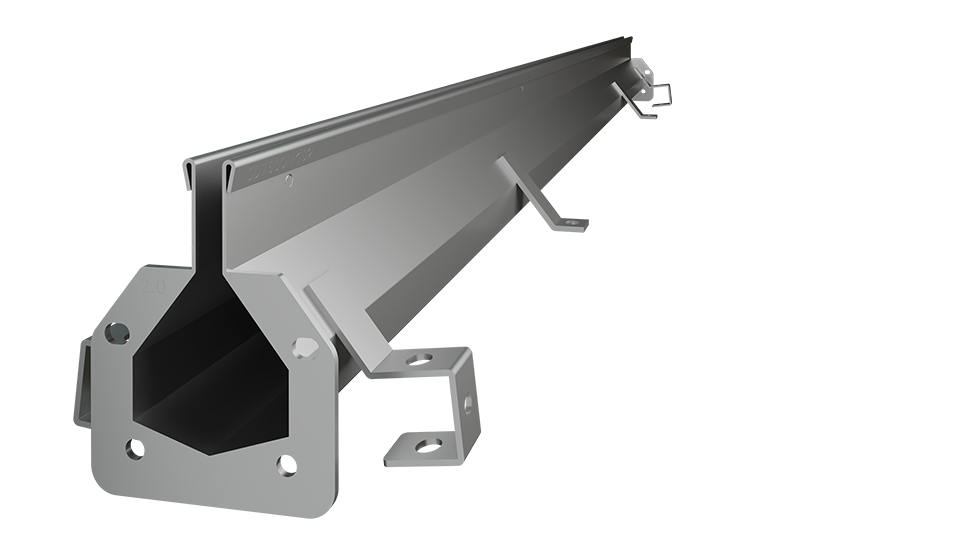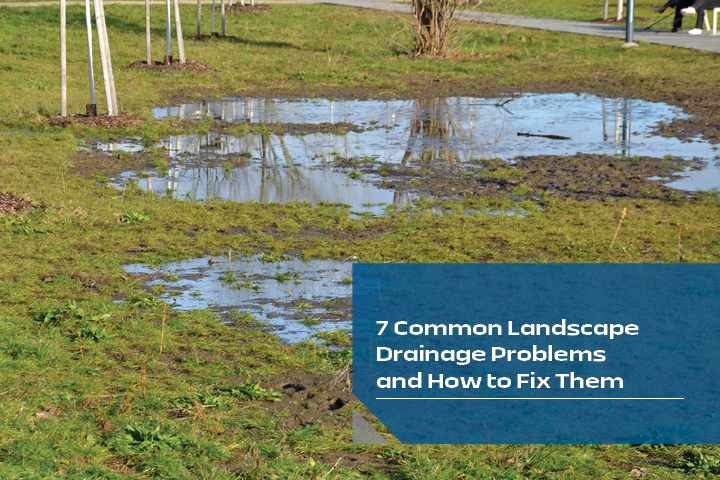
One of the most horrifying sights for a homeowner is a backyard full of standing water after a heavy rain. When your yard is continuously getting destroyed by rain, it makes landscape maintenance nearly impossible.
Standing water on your property is almost always the result of improper drainage, from the grade to an actual drainage channel. Luckily, these problems are fairly easily remedied.
Common Landscape Drainage Problems
Here are some common landscape drainage problems and helpful solutions to help prevent flooding.
1. Improper Grading
Grading refers to the ground slope around the perimeter of a home or other structure. While a property's grading typically goes unnoticed, this is the first and most critical step in protecting your home from water ingress.
The ground should slope away from your home or commercial property on all sides. Water will always take the path of least resistance, which is dictated by gravity.
Ideally, the grade should slope about 1 inch every foot away from your home or property, for the first 5 to 10 feet away. This can be pretty difficult to achieve, especially around older homes, so just ensure that the ground doesn’t begin to slope upward as you move away from your home.
2. Roots Invading Drain Pipes
Tree and plant roots are notorious for causing drainage issues, as they can become invasive, growing under up under your foundation and even into pipes, where they can create cracks and even clogs.
With the pipes damaged and clogged, water may have nowhere to go, pooling and eroding your foundation and destroying your weeping tile.
If the damage has been done, getting the roots removed and the pipes cleaned and repaired is critical. Preventative measures include excellent tree care on your property, either on your own or by an experienced arborist, as well as wrapping newly installed piping to prevent intrusion.
3. Flat Paved Areas
Proper grading is also essential for any hardscape areas, like patios, pool decks, driveways, and similar areas. It is critical to ensure that these areas also feature the proper slope, so water doesn't collect and create slippery surfaces or erode the pavement.
Inspect your paved areas semi-regularly to ensure there are no dips or cracks. These could indicate that water has eroded the soil underneath, weakening the concrete, asphalt, or paving stone.
Processes like mudjacking can help recover sagging pavement, though it is a somewhat invasive procedure, requiring large holes to be drilled into the pavement. Initial grading, before putting down pavement of any kind, is key to preventing these issues.
4. Poorly Designed Landscaping
Homeowners put a lot of hard work into their yards in order to turn them into serene retreats, outdoor activity areas, the perfect BBQ hangout, and more. If designed poorly, however, landscaping can be problematic.
Things like weed-ridden soil and improper grading are two of the most common issues. Plant bed layouts can also be problematic, as poorly laid out plant beds can impede natural water flow. If this happens, plants and structures can suffer damage.
If you’re landscaping on a whole-yard scale, consult a professional. Experienced landscapers can design around any imperfections in your property in order to promote drainage, prevent damage, and ultimately give you a space you can be happy with.
5. Surface Depressions
When a property has poor grading, small depressions can appear in a yard or under pavement, allowing water to pool during heavy rains or the spring thaw. This excess water can kill grass and plants and leave the area very muddy, with nowhere for water to go.
An easy fix for these depressions is to fill them in when the soil is dry so that there is a continuous slope towards a drain system. Pack the soil down with shovels or using a plate compactor (a vibrating piece of equipment that resembles a floor buffer, used to tightly pack down soil).
6. Poor Soil Quality
There are three different materials that can drastically impact soil quality and stability on your property: sand, silt, and clay.
Soils heavy in clay typically suffer from drainage issues, as their density makes it difficult for water to pass through. When it does, it can create shifting issues. This is what makes clay soils ideal for building on, though shifting can happen, causing damage to the foundation.
Sandy soil, on the other hand, allows water to pass through very easily. This increases its ability to shift, but it doesn’t cause absorption and expansion, which makes sandier soils better suited for drainage improvements, especially near your home’s foundation. Water will have an easier time flowing down and away from the foundation, provided grading is up to standard.
7. Improperly Installed/Dirty Gutter Systems
Gutters or eavestroughs are critical to protecting a home's exterior, but they need to be installed the right way. A good seal must be in place to prevent water from draining behind the gutter, close to the home. Otherwise, water may pool in flower beds or on front porches, potentially making its way to the foundation.
A bit of a slope should also be present in a gutter system in order to allow water to naturally drain toward the downspouts. Similarly, if the downspouts aren't installed correctly, they can empty into plant beds or paved areas, which can also be problematic.
Ensure downspouts extend past any areas where the grade may not be ideal so that the water drain downhill and away from the home.
Dealing With Landscape Drainage Problems

While there are multiple “easy” ways to fix many of your drainage problems, installing a proper in-ground drainage system will help you ensure that stormwater and runoff is quickly carried away from your home and toward a sewer system.
Many outdoor drainage systems exist, but you want one that maintains the look you’ve created with your landscape design. This is where the Slot Drain system shines.
The 7000 Series Slot Drain is the ideal system for landscape drainage. Like all Slot Drain systems, this sleek, one-piece linear drain is aesthetically pleasing and can easily blend in with the landscaping pavement for a seamless look.
Unlike traditional trench drain systems, Slot Drain doesn't require a grate cover, which can get clogged easily and is difficult to clean.

The 7000 Series is made with corrosion- and temperature-resistant stainless steel, making it a safer and more durable option than other materials. It also has a Load Class C designation, allowing it to withstand even vehicle traffic without damage.
Easy to clean and maintain, Slot Drain is the ideal drainage solution for stunning landscape design.
Avoiding Common Landscape Drainage Problems
Do you have questions about how an effective drainage system can improve and protect your landscape design? Contact one of our drainage experts today, and we’ll be happy to assist with your project.


.jpg?width=1512&name=Copy%20of%20IMG_0001-1%20(1).jpg)
